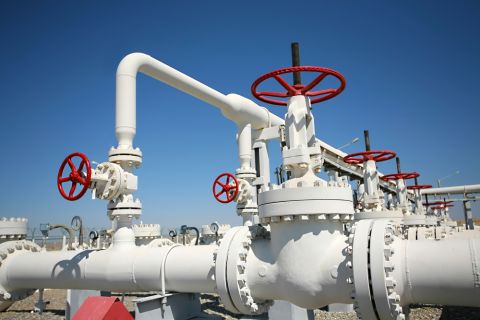Rising oil prices are boosting hopes that more FPSO units will join the workforce following years of lackluster activity caused mostly by spending cutbacks driven by the downturn. But don’t expect change to happen overnight.
Stratas Advisors forecast that additions of new operative FPSO units will wane, with eight vessels added in 2018 and only four in 2019. However, more FPSO vessels will go to work between 2020 and 2023, with each year seeing about 10 more FPSO units put to sea.
Currently, “there are not really a lot of FPSO projects coming onstream, but after 2019 there might be more,” Stratas Advisors’ Upstream Director Shuqiang Feng said, noting that improving market conditions might prompt oil companies to reevaluate stalled projects and proceed with new ones. “The most recent recovery is going to impact those projects coming onstream after 2019 or in 2020.”

However, the typically long development cycle for offshore projects and infrastructure required means the turnaround won’t occur quickly. A couple of smaller fast-track projects could buck the trend and come online within a year or two; however, that won’t be the norm. “The bigger deepwater developments, especially those requiring newbuild FPSO units, take time—about three or four years,” Feng said.
As for the market leader, Latin America still remains on top led by Petrobras despite recent economic woes, a corruption scandal and local content issues impacting the pace of some developments.
“Geographically, Latin America is booming in terms of FPSO usage in the next 10 years, driven by the ongoing investment in Brazil presalt developments,” Stratas said in an FPSO market outlook. “The region is expected to more than double its FPSO vessel count by 2025 from the current 42 to 88. Most of the new additions (40 of 46) are designated to Brazil.”
Petrobras plans to start up four new production units this year and five in 2018, according to its investment plan for 2017 to 2021. Among the anticipated startups this year are the P-66 at Lula Sul, the FPSO Cidade de Campos dos Goytacazes at Tartaruga Verde e Mestiça and FPSO P-67 at Lula Norte.
Petrobras said the Libra Consortium—which includes Petrobras, Royal Dutch Shell Plc, Total, CNPC and CNOOC— expects to hire an FPSO unit for the Libra Pilot project during 2017 with startup scheduled for second-half 2020. In October 2016 the consortium started a new bid process for the FPSO unit after prices came in “abnormally” higher than expected given market conditions.
Progress also is being made on vessels for projects expected to start in 2018. The hull for FPSO P-69, which will have 18 processing modules and will be installed in the Lula Extremo Sul area of the Lula Field, arrived at the Brasfels shipyard in March.
Stratas expects the Latin American region to surpass the Asia-Pacific region’s number of operating FPSO units. However, Petrobras is not expected to add more to its plate as it divests assets to generate much-needed cash.
“I don’t think they will do more than they have planned,” Feng said. “Historically, they have a bigger appetite than they can chew. ... But to expand, I don’t think they are likely to do that. If they can meet their current plans, it will be huge for them.”
But with 48 FPSO units deployed, the Asia-Pacific region outnumbers any other region, the consulting firm said. MODEC, a Houston-based builder of FPSO units, installed or operates about seven units in southeast Asia and another three in the Oceania region, its website stated—nearly as many as Stratas predicts to join the global fleet in 2018.
Growth also is expected offshore West Africa, a region where 37 FPSO units are operating, Stratas said. The FPSO Prof. John Evans Atta Mills is among the most recent vessels to start production, flowing oil from the Tullow Oil-operated Tweneboa, Enyenra and Ntomme fields offshore Ghana. Another 12 FPSO units are in the conceptual planning stage, and five more are being built offshore West Africa.
Another region likely to see more FPSO units is offshore Europe. Stratas Advisors’ forecast indicates seven more units are in store for northwest Europe, where 23 are operating.
Activity offshore Guyana, with ExxonMobil’s success on the Stabroek Block, and offshore the Falkland Islands, where Premier Oil and partners are moving forward with Phase One of the Sea Lion development, are among the frontier areas that will bring FPSO units online in the coming years, Feng said.
“The industry had about 140 FPSO units actively employed globally in 2015. Operators added seven FPSO units to the global fleet in 2016,” Stratas said. Just more than 10 are expected to start first production this year.
Recommended Reading
Brett: Oil M&A Outlook is Strong, Even With Bifurcation in Valuations
2024-04-18 - Valuations across major basins are experiencing a very divergent bifurcation as value rushes back toward high-quality undeveloped properties.
Marketed: BKV Chelsea 214 Well Package in Marcellus Shale
2024-04-18 - BKV Chelsea has retained EnergyNet for the sale of a 214 non-operated well package in Bradford, Lycoming, Sullivan, Susquehanna, Tioga and Wyoming counties, Pennsylvania.
Defeating the ‘Four Horseman’ of Flow Assurance
2024-04-18 - Service companies combine processes and techniques to mitigate the impact of paraffin, asphaltenes, hydrates and scale on production — and keep the cash flowing.
Santos’ Pikka Phase 1 in Alaska to Deliver First Oil by 2026
2024-04-18 - Australia's Santos expects first oil to flow from the 80,000 bbl/d Pikka Phase 1 project in Alaska by 2026, diversifying Santos' portfolio and reducing geographic concentration risk.
Ozark Gas Transmission’s Pipeline Supply Access Project in Service
2024-04-18 - Black Bear Transmission’s subsidiary Ozark Gas Transmission placed its supply access project in service on April 8, providing increased gas supply reliability for Ozark shippers.





